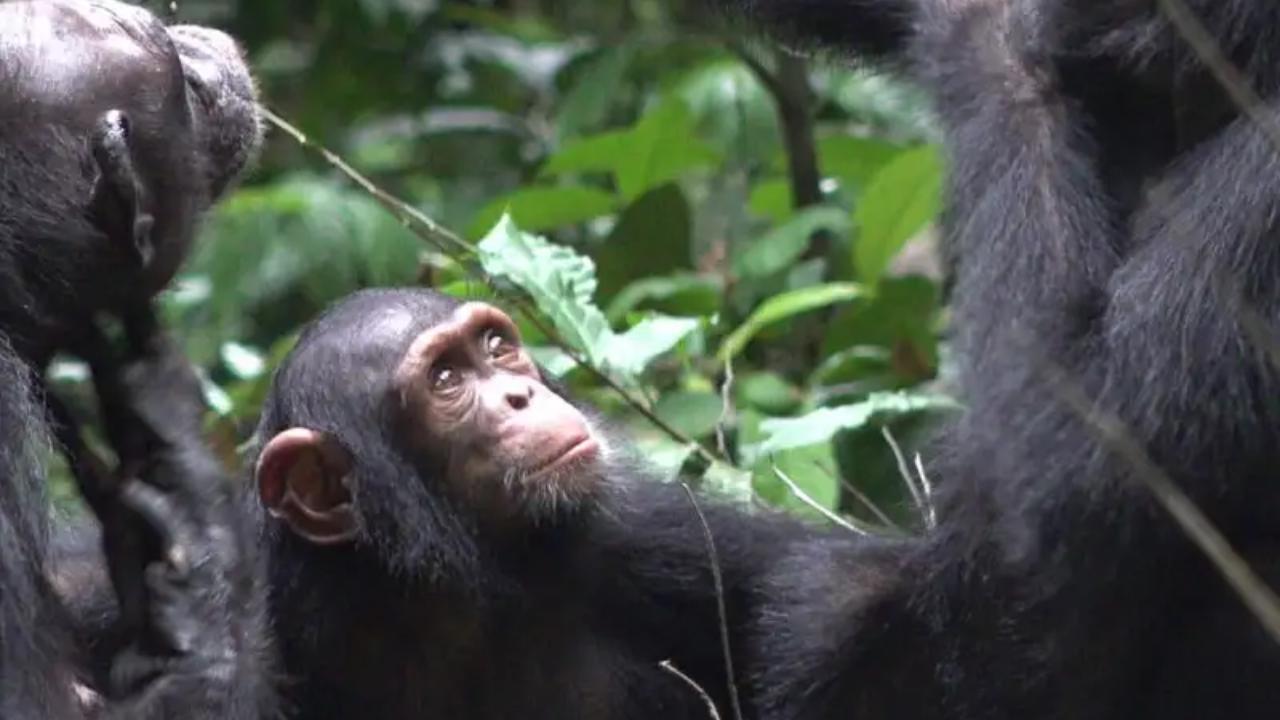NEW DELHI: Chimpanzees sought out and ate medicinal plants to treat their injuries, according to a study. While wild chimpanzees are known to consume a variety of plant matter, researchers said it can be hard to figure out if they intentionally seek out medicinal plants to heal their ailments, or “passively” consume plants that happen to be medicinal.
The study is published in the journal PLoS ONE.
At the Budongo Central Forest Reserve in Uganda, the researchers, including those at the University of Oxford, UK, observed the behaviours and health of 51 wild chimpanzees, belonging to two habituated communities.
The researchers observed a male chimpanzee with an injured hand seek out and eat the leaves of a fern, which may have helped to reduce pain and swelling. They also recorded another chimpanzee with a parasitic infection consuming the bark of a cat-thorn tree (Scutia myrtina).
The team also tested the plant extracts of tree and herb species in the reserve, which they suspected were being consumed by the chimpanzees to self-medicate, for anti-inflammatory and antibiotic properties.
The species included plants not part of the chimpanzees’ normal diet, but being consumed for their healing properties.
The authors found 88 per cent of the plant extracts had antibacterial properties, arresting the growth of bacteria, while 33 per cent of them had anti-inflammatory properties.
Deadwood from a tree in the Dogbane family (Alstonia boonei) showed the strongest antibacterial activity and also had anti-inflammatory properties, suggesting it could be used to treat wounds, they said.
Bark and resin from the East African mahogany tree (Khaya anthotheca) and leaves from a fern (Christella parasitica) were found to exhibit potent anti-inflammatory effects.
The results suggested that chimpanzees looked for and ate specific plants for their medicinal effects, and the study was one of the first to document evidence of this kind, the authors said.
The medicinal plants growing in Budongo Central Forest Reserve could also be helpful for the development of new drugs to address the challenges of antibiotic-resistant bacteria and chronic inflammatory diseases, the authors said.
The findings demonstrated how watching and learning from our primate cousins may fast-track the discovery of novel medicines, along with emphasising the importance of protecting our forest pharmacies, they said.
The study is published in the journal PLoS ONE.
At the Budongo Central Forest Reserve in Uganda, the researchers, including those at the University of Oxford, UK, observed the behaviours and health of 51 wild chimpanzees, belonging to two habituated communities.
The researchers observed a male chimpanzee with an injured hand seek out and eat the leaves of a fern, which may have helped to reduce pain and swelling. They also recorded another chimpanzee with a parasitic infection consuming the bark of a cat-thorn tree (Scutia myrtina).
The team also tested the plant extracts of tree and herb species in the reserve, which they suspected were being consumed by the chimpanzees to self-medicate, for anti-inflammatory and antibiotic properties.
The species included plants not part of the chimpanzees’ normal diet, but being consumed for their healing properties.
The authors found 88 per cent of the plant extracts had antibacterial properties, arresting the growth of bacteria, while 33 per cent of them had anti-inflammatory properties.
Deadwood from a tree in the Dogbane family (Alstonia boonei) showed the strongest antibacterial activity and also had anti-inflammatory properties, suggesting it could be used to treat wounds, they said.
Bark and resin from the East African mahogany tree (Khaya anthotheca) and leaves from a fern (Christella parasitica) were found to exhibit potent anti-inflammatory effects.
The results suggested that chimpanzees looked for and ate specific plants for their medicinal effects, and the study was one of the first to document evidence of this kind, the authors said.
The medicinal plants growing in Budongo Central Forest Reserve could also be helpful for the development of new drugs to address the challenges of antibiotic-resistant bacteria and chronic inflammatory diseases, the authors said.
The findings demonstrated how watching and learning from our primate cousins may fast-track the discovery of novel medicines, along with emphasising the importance of protecting our forest pharmacies, they said.
Denial of responsibility! Swift Telecast is an automatic aggregator of the all world’s media. In each content, the hyperlink to the primary source is specified. All trademarks belong to their rightful owners, all materials to their authors. If you are the owner of the content and do not want us to publish your materials, please contact us by email – swifttelecast.com. The content will be deleted within 24 hours.


